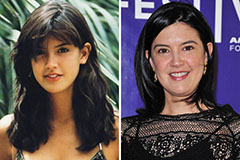The Origins of Audiology
Audiology's roots can be traced back to ancient times when civilizations like the Egyptians and Greeks initially started to acknowledge and record hearing impairments. Nevertheless, it wasn't till the 19th century that the study of hearing took on a more scientific method. The development of the ear trumpet in the late 18th century, a rudimentary device developed to magnify noise for the hard of hearing, marked one of the earliest attempts to deal with hearing loss.The Birth of Modernized Audiology
The turning point for audiology came after World War II, as thousands of veterans returned home with noise-induced hearing loss triggered by direct exposure to loud surges and equipment. This developed an immediate requirement for reliable treatments and rehab services, catalyzing the establishment of audiology as a formal profession. Audiologists began with fundamental diagnostic tests to evaluate hearing loss and rapidly moved towards establishing more advanced audiometric techniques.Technological Advancements and Essential Learnings
One of the most significant advancements in audiology came with the development of the electronic hearing aid in the 20th century. Early models were bulky and restricted in performance, however the development of digital innovation in the latter half of the century changed listening devices style, making gadgets smaller sized, more effective, and efficient in providing a clearer sound quality.The 1970s saw a considerable development with the development of cochlear implants, which are sophisticated electronic devices that can promote the acoustic nerve to assist people with serious deafness who do not take advantage of regular hearing aids. Over the years, audiological research has widened to check out not just the physical elements of hearing loss but likewise the mental and social effects, acknowledging how hearing problems can affect communication, thinking, and general well-being. This expanded viewpoint on hearing health has actually promoted a more inclusive treatment method that combines technical interventions with counseling and auditory rehabilitation.
The Digital Era and More
Presently, audiology is at the leading edge of the digital age, with progress in artificial intelligence (AI), telehealth, and customized medicine influencing the instructions of hearing health care. Contemporary hearing devices such as hearing help and cochlear implants use AI technology to adjust to various environments, providing a high degree of clearness and customization. The availability of tele-audiology services, made possible by web connections, has actually increased the ease of access of hearing care by enabling remote evaluations, fittings, and conversations.More To Come
Audiology has actually progressed thanks to the creativity and determination of scientists, and people seeking treatment. Progressing, the field is set through innovation, pushing the in our understanding and care for hearing and balance concerns. With continuous improvements in technology and a much better understanding of how hearing loss effects people, audiology is sure to even more boost its effect on global lifestyle.The evolution of audiology, covering from primitive ear trumpets to advanced AI-driven hearing devices, testifies to mankind's remarkable achievements in addressing the intricacies of hearing impairment. This storyline epitomizes our continuous pursuit of understanding, innovation, and improvement, highlighting our undeviating dedication to understanding the complexities of sound and human connection.
 Scott Baio Then & Now!
Scott Baio Then & Now! Spencer Elden Then & Now!
Spencer Elden Then & Now! Phoebe Cates Then & Now!
Phoebe Cates Then & Now! Heather Locklear Then & Now!
Heather Locklear Then & Now! Megyn Kelly Then & Now!
Megyn Kelly Then & Now!